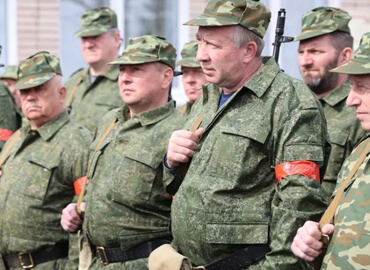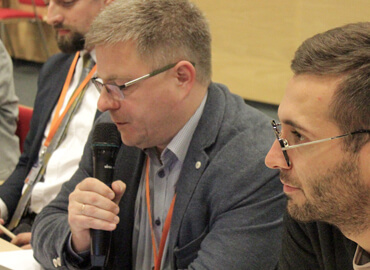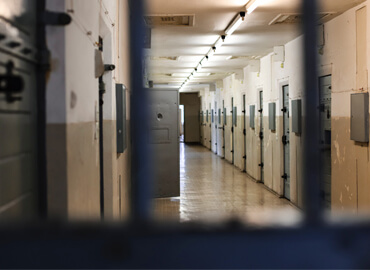When carrying out information operations, the Kremlin acts opportunistically, striving to make the most of the moment. Often, information attacks are conducted at a time when society is most receptive to them – during elections and in times of crisis.
In Ukraine, the predictable next wave of Kremlin propaganda with narratives about “external government,” “coup d’etat,” and “nationalists” came at the end of November – the anniversary of the beginning of Euromaidan. Ukrainians protested in support of European integration on November 21, 2013 after the government halted preparations for signing the Association Agreement between Ukraine and the European Union. Despite attempts to forcefully suppress protests and brutal repressions, the Revolution of Dignity consolidated the European vector of the country’s development.
Over the past seven years, the Kremlin has failed to come to terms with the loss of Ukraine.
This year, the Day of Dignity and Freedom on November 21 again became a catalyst for the emergence of numerous publications that spread the Kremlin’s narratives on Ukraine.
For example, on the website Ukraina.ru, which has been actively promoted recently both in Ukraine and in Belarus, they write that “The celebration of the anniversary of Euromaidan has turned into a symbolic day of national shame.” At the same time, cliches about “nationalist crooks” and a “bloody coup d’etat” are used, while Ukraine is labeled “a protectorate ruled on Twitter by an ambassador of a distant overseas country.”
Mass publications during this period appeared on all pro-Kremlin media resources in Ukraine. The repetition of narratives as the basis of Russian propaganda explains the frequency of the references.
This is clearly visible in Belarus, where Russian propagandists adhere to the same basic line as in Ukraine. The basic narrative of the Kremlin media is the same in both countries. Specifically, this is a clear designation of an external enemy, which is counterbalanced by Russia. The development of this narrative is that it is beneficial for Ukraine and Belarus to deepen cooperation with Moscow, since their future is possible only in an alliance with Russia or as a part of it, as is the case with Belarus.
This global strategic narrative is broken down into many narrower storylines that are used depending on the specific events and tactical goals in each country.
iSANS analyzed pro-Kremlin media propaganda pieces that are directed at a Belarusian audience. Experts identified six main narratives in the Monitoring of Pro-Kremlin Propaganda group on Ukraine. They are as follows:
- Ukraine is under external control and at the mercy of Western puppets
- Ukraine is under the control of fascists and Nazis
- Without an alliance with Russia, Ukraine is doomed to collapse, as there are no prospects for statehood
- Russia has nothing to do with the conflict in Donbass and the annexation of Crimea was justified
- Ukraine’s aggressive plans regarding Belarus
- Ukraine shot down the Malaysian Boeing and other conspiracy theories
The classification of narratives carried out by iSANS in Belarus makes it possible to compare them with similar narratives that pro-Kremlin media now use in Ukraine. To identify them and find differences, we researched publications from November 2020.
We first examined the resources that are actively relaying Kremlin narratives in Ukraine. This includes the sites of the television stations NewsOne, 112 Ukraine, and ZIK, and the internet sites Strana.ua, Vesti.ua, znaj.ua, Eurasia Daily, and Politnavigator.
It is important to note that these media are predominantly Russian-speaking or have versions in two languages, which allows for producing common content for the broader Russian-speaking audience. The absence of a language barrier makes it easier to form a media product directed at Belarus and Ukraine, accelerates deceptive practices, at the same time maintaining and strengthening the “unity” of the information field.
In this restricted information field, the Kremlin imposes its own agenda, creates an uncontested picture of events or, conversely, information chaos, while simultaneously radicalizing rhetoric and polarizing society.
The narratives highlighted by iSANS in monitoring for Belarus are also present in Ukraine with some characteristic differences. If in Belarus, Russia is mentioned only positively, then in Ukraine they try not to mention Russia directly in publications, with the main emphasis placed on the negative consequences of refusing rapprochement with Moscow in favor of European integration. At the same time, the image of the West as an aggressor is being formed in Belarus, while in Ukraine the narrative about external control and the absorption of Ukrainian sovereignty by the West is more widespread.
To clearly show the similarity of Kremlin narratives in Belarus and Ukraine, we have selected several recent examples for each of the points from Ukrainian media.
1. Ukraine is under external control and is at the mercy of Western puppets
This narrative has been promoted in Ukraine for a long time. Its distinctness lies in that the so-called “soroses” who are financed by structures close to the billionaire George Soros are among the agents of Western influence in Ukraine.
On November 19, 112.ua published an article titled “Yuriy Zagorodny: Today Ukraine is the world’s Soros farm”. The article cites a statement made by Yuri Zagorodny, the People’s Deputy from Opposition Platform – For Life: “…everything became obvious when all these Soros agents immediately took key posts, starting with the post of prime minister. All key industries and state-owned enterprises received supervisory councils consisting entirely of ‘soroses.’ All these Saakashvili-Shabunins-Zalechuk-mercenaries emerged again… Crazy tariffs began to break new records. The country began to run into debt to the West at an incredible pace.”
The same material appeared on Newsone and ZIK.
Eadaily.com published a piece called “In Ukraine, they hint at the selection of patients with Covid-19 – like in Auschwitz,” in which it is concluded that “The Soros Foundation now actually manages the entire socio-economic sphere and health care of Ukraine”.
On November 21, the site vesti.ua posted the news that “Viktor Medvedchuk will not allow external control of Ukraine – the media”. The article says that “Medvedchuk showed the Ukrainian anti-fascist electorate that he can effectively fight elements of external control.” Similar articles were posted by 112.ua, Newsone, and Ukraine.ru.
The piece called “Puppet of puppets: the U.S. transferred control of Ukraine to its satellites” on Politnavigator states: “Ukraine, which has lost its value for Washington, has become a colony of such U.S. puppets as Poland and the Czech Republic… Ukraine is not a subject, but an object of international relations for everyone. Therefore, what concerns the near future, no matter how pessimistic it may sound, Ukraine is an excised piece. On the one hand, it is a U.S. colony, but America is already losing interest”.
2. Ukraine is under the control of fascists and Nazis
On November 17, Strana.ua published an article called “November is rich in memorable Ukrainian dates, including fascist ones”: “November is rich in memorable dates, and one of the undeservedly forgotten ones is the participation of the Union of Ukrainian Fascists in the creation of the OUN. Modern researchers disavowal the fascist past of ‘integral nationalism’ and do not see the ideological and programmatic similarities, but there is nothing to be ashamed of”.
Strana.ua published a note on November 21 in the “Social Networks Feed” section that read “The elections have passed, meaning that nationalists can be released. The authorities no longer have the need to demonstrate a fight against street lawlessness.”
On the same day, the Politnavigator writes “Jews promise to close visa-free travel to the EU for Banderite Ukraine”: “Ukrainian society is struck by anti-Semitism, but the authorities, flirting with nationalists and promoting the cultivation of ultra-right sentiments, stubbornly deny this, and the most egregious cases like attacks on synagogues are attributed to the ‘machinations of Moscow agents.”
3. Without an alliance with Russia, Ukraine is doomed to collapse, as there are no prospects for statehood
A defining characteristic of this narrative in Ukraine is its combination with the narrative about “impending federalization.” In addition, it is often used by Ukrainian pro-Russian political parties.
On October 27, Strana.ua published an article called “Local elections result in feudal fragmentation”: “…centrifugal forces in Ukraine are rapidly gaining momentum. The fragmentation of the country is proceeding at a frantic pace. Ukraine is turning into a patchwork republic with a tendency towards chieftaincy and with less and less influence of the Center on political processes in the regions”.
And this, from EADaily on October 29 – “The failure of the ‘Servant of the People’ and the victory of quasi-parties is a marker of the federalization of Ukraine”.
On November 17, 112.ua published an interview with Oleksiy Dzermant titled “The political scientist sees tendencies towards the restoration of relations between Ukraine and Russia”: “In Ukraine, there is disillusionment with the policies of President Zelensky and the growth of opposition parties that look towards Russia. This means that there is a chance for the resuming of close relations between Ukraine and Russia… Not all pro-Russian elites have left the country and not all pro-Ukrainian elites are hostile to Russia. There are enough people like Viktor Medvedchuk in the country. The only question is how ready they are for constructive interaction.”
From Politnavigator – “In the LPR they predict the victory of a party with the slogan ‘Kyiv is a Russian land”: “In Ukraine, from the very beginning of ‘independence,’ there has never been a political party advocating for Russian identity, therefore the votes of pro-Russian people went in favor of Ukrainian political forces speculating on this issue… theoretically, a party that would have emerged in Ukraine under the slogan of ending the war and returning to Russia would have won a percentage of the votes no less than that of the political forces of the OLE and European Solidarity combined”.
4. Russia has nothing to do with the conflict in Donbass and the annexation of Crimea was justified
On November 21, on the seventh anniversary of the start of Euromaidan, Strana.ua published an article called “From ‘good mood’ to massacres. Why did Euromaidan happen in Ukraine seven years ago”: “…and in general the seizure of power in Kyiv by radical nationalist forces launched the process of Ukraine’s semi-breakdown. In the southeast, mass protests began, which were supported by Russia. The rest is known. In Crimea, protests against Kyiv became a catalyst for annexation and incorporation into the Russian Federation. And in the Donbass, they brought to life the ‘DPR’ and ‘LPR’ and the more than six-year war. Supporters of the Maidan say that their protests have nothing to do with such dire consequences for Ukraine. They say they were caused exclusively by Russia’s actions. However, it is obvious that the Maidan initially did not unite society but split it. It became clear that in the event of its illegal victory (that is, not through elections), millions of people in the southeast would not accept the change of power. Which is what happened”.
Ukraine’s aggressive plans regarding Belarus
Lukashenko himself is the main newsmaker here. On November 14, he gave an interview to a foreign journalist, where the television station 112 Ukraine, controlled by Viktor Medvedchuk, was the only Ukrainian media outlet. Subsequently, Lukashenko’s messages were actively relayed by a pool of other pro-Kremlin media in Ukraine.
On November 15, 112.ua published an article titled “Alexander Lukashenko: I am a pro-Ukrainian person. And after that you introduced sanctions against me?”: “Why ruin relations? Why do you follow the lead of the Americans and the Poles in creating this center of psychological efforts against Belarus? We see all this coming from the Ukrainians. The military informed us we have millions of friends there. We checked and it’s certain… I am generally a pro-Ukrainian person. And after that you imposed sanctions on me? What is the reason for these sanctions? Not one. It means that your president is no one either, excuse me”. The same article came out on NewsOne.
On November 20, ZIK published an article under the headline “Lukashenko announced the presence of an American special services center in Kyiv”: “… a center of American special services is allegedly operating in Kyiv, the activities of which have been confirmed by representatives of the Belarusian and Russian intelligence services. […] The most powerful special services in the world are working against Belarus, and their centers are located in Ukraine and Poland”.
Ukraine.ru warned in September about Ukraine’s hostility towards Belarus: “And even today, when Ukraine has already at the highest level of power turned into an openly hostile state that trains Belarusian militants and nurses fugitive oppositionists on its territory, Lukashenko is soft on Ukrainians… The reason is a mystery shrouded in darkness. And even saying in 2020 in an interview with RT that ‘unfortunately, Ukraine has begun to support…,’ he is either disingenuous or poorly informed. Ukraine ‘began to support’ Lukashenko’s enemies not today and not even the day before yesterday. It’s been since at least 1996”.
Ukraine shot down the Malaysian Boeing and other conspiracy theories
This narrative is now used to a limited extent in the Ukrainian media field. It can be assumed that the replication of outright fakes will lead to undesirable consequences for the media outlets discussed. Oftentimes, dubious content is disguised as interviews or “independent” opinions.
Articles containing pro-Kremlin narratives are often placed on the main pages of internet resources, in the sections “Main,” “Choice of edition,” “Popular,” etc. For example, on the main page of Strana.ua in the “Country selection” section for a long time there was a piece from May 19, 2020 – “How Americans rule Ukraine, and will Poroshenko be imprisoned. 7 main questions about ‘Bidengate’”.
Often, these media use manipulative and clickbait headlines to reinforce and support narratives. For example, on the website Vesti.ua on November 21 in the section “Readers’ Choice” a news piece was posted called “Is there ‘dignity’ yet? On the Maidan, they shouted ‘Heil Hitler’ and scolded the Jews”.
Monitoring has shown that materials that contain propaganda and pro-Kremlin narratives are always published simultaneously on several resources, thus increasing audience reach. The degree of effectiveness of such messages depends directly on repetition in the media. And given the similarity of the information field, the same anti-Ukrainian narratives, with some adjustments, are reproduced both in Belarus and in Ukraine. Objects of information operations are systematically conveyed through the same stories in different forms, to which new details are added. The task of the propagandists is to make the narratives recognizable and to introduce them into the familiar information field.
***
This article is published as part of the Prospect Foundation project “Online Media Literacy for Editors and Administrators of Social Media Public Pages”, managed by iSANS and supported through grants from the International Visegrad Fund.
Материал доступен на русском языке: Сравниваем антиукраинские нарративы кремлевской пропаганды в Беларуси и в Украине











